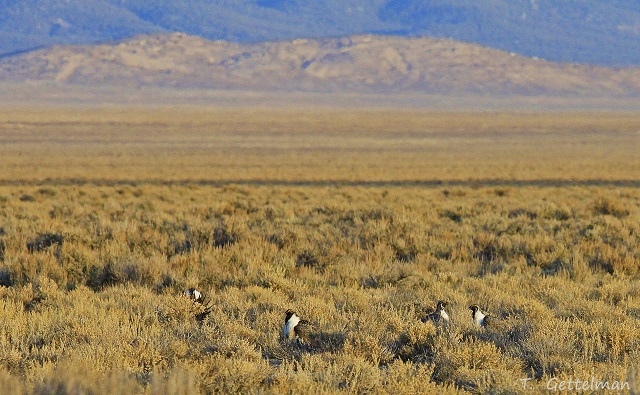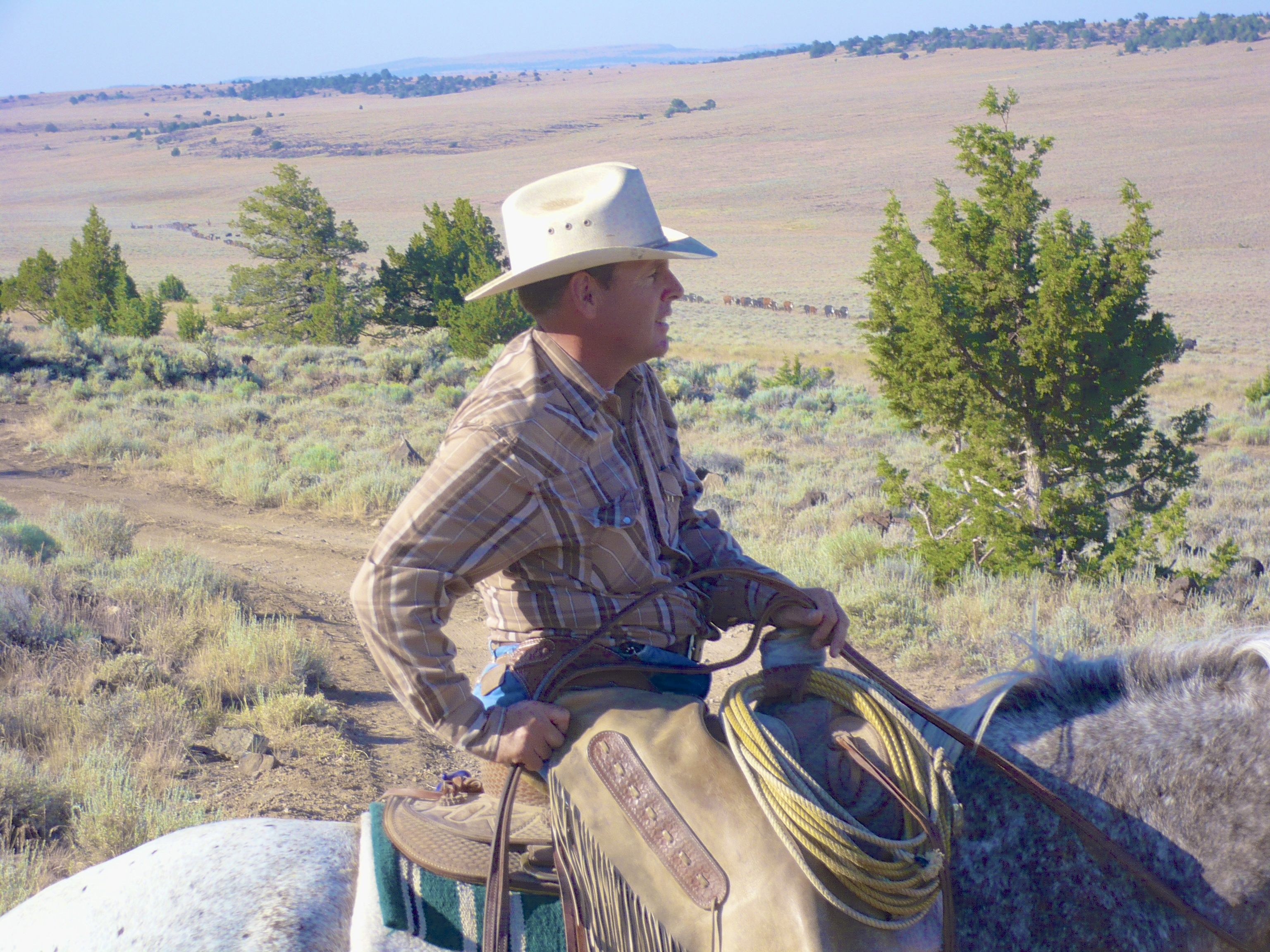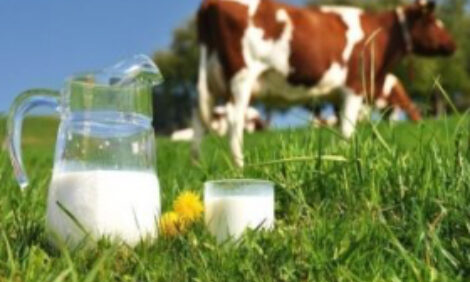



Conserving Sage Grouse - High Stakes for US Beef
For over 150 years cattle and sheep have shared the western landscape with the American Greater Sage Grouse, writes John Wilkes.Declining numbers from 16 million at the turn of the last century to near 400,000 today leave the iconic bird centre stage amidst conflicting views on conservation strategy. Implementation of any official stewardship policy impacts directly on western ranchers whose cattle graze government-owned rangeland.
.jpg)
The greater sage grouse and cattle in the sagebrush landscape of the American West. Photo credit: USDA NRCS.
Early on it was a free for all with little regard for native flora and fauna. In 1934, the Taylor Grazing Act sought to control exposure to excessive livestock numbers and restore order. Nowadays controlled grazing is integral to sustain favourable habitat for sage grouse.
Historically, a decline in grouse population mirrored a similar decline in the Western beef herd. A fact acknowledged by cattlemen as they endeavour to maintain grouse numbers. The adage, ‘what’s good for the bird is good for the herd’ reinforces their efforts.
Darkening the horizon is cattlemen’s concerns about recent radical changes in government conservation policy: changes that cause them to feel unprotected and resentful. New policy challenges existing successful state sponsored grouse projects. This move is seen by some to reinforce government control over its federal lands.
Additionally, environmental groups seek total exclusion of livestock to ‘preserve’ government rangeland. Retrospectively, the impact on the same environment from millions of bison hooves and mouths has been disregarded.
Today cattle share federal land with sage grouse. Many cattle belong to 180,000 direct and state affiliated members of The National Cattlemen’s Beef Association (NCBA).
Ethan Lane, Executive Director, Public Lands Council, NCBA Federal Lands, explained: “The grazing footprint in the west is huge and sage grouse feature across much of it. There are 650 million acres of government land in 11 states; 250 million acres are open for grazing. Add 140 million acres of adjoining private land and it equates to 350-400 million acres available to livestock.”
Mr Lane’s members are quite literally on the front line in sage grouse conservation. His public presentations about this topic in the western US are well attended. Mr Lane said: “Half the room are ranchers taking notes about how they can continue to conserve this species and co-exist on the landscape.”

Sage grouse mating whilst cattle graze nearby. Photo credit: Ken Miracle.
There is urgency for ranchers and landowners to ensure a sustainable future for the sage grouse. The alternative is bleak. The sage grouse can be listed under The Endangered Species Act (ESA). ESA status confers non-negotiable government enforced protection that is policed by the US Fish and Wildlife Service.
An ESA listing of the sage grouse would change the entire western rangeland for local communities and paralyse the American beef industry. Similarly the US sheep industry would be adversely affected due to its reliance to some extent on these government-controlled lands. The American West will never be the same.
John O’Keeffe, President, Oregon Cattlemen’s Association commented: “ESA listing of sage grouse holds far more challenges and would make ranching incredibly difficult given the anticipated levels of bureaucracy. It would create an environment for litigation and the emergence of regulatory mechanisms. Endangered species case law opens doors to the courts.”
Mr O’Keeffe runs 1,000 Angus and Hereford cows over 100,000 acres of prime grouse habitat near Adel, Eastern Oregon. He ranches 80,000 acres on government lease with the remaining acreage deeded and private lease.
Mr O’Keeffe’s view is straightforward: ”We’re fine with sage grouse; our numbers are officially assessed as being healthy. Western rangeland that’s good for livestock is good for grouse.”
John O'Keeffe out on rangeland in Oregon. Photo credit: Andy Rieber.
Possible ESA intervention is of great consequence, so much so that The Bureau of Land Management (BLM) has acted in response. The BLM has overall control of US government land. They manage for multiple use including livestock grazing, energy development, recreation and timber.
The Bureau of Land Management recently announced a Resource Management Plan (RMP) for sage grouse to prevent ESA listing. The RMP has not been well received - feelings are strong. US states and governors have sued BLM for misrepresentation of what was originally agreed.
Ethan Lane explained: ”It’s the view of NCBA that the BLM fails to credit considerable historical and ongoing beneficial state schemes to conserve sage grouse.” He expounded: “Rather than expanding existing productive initiatives radical inflexible changes were proposed.”
An ‘existing initiative’ is the Sage Grouse Initiative (SGI). Ranchers believe this offers genuine hope. SGI reduces stocking rates and modifies livestock management. To date, 4.5 million acres of grouse habitat have been conserved.
Results are tangible. In the past two years there has been a 63 per cent increase in sage grouse numbers. Counting male breeding ‘leks’ or display areas quantifies the population.

Sage grouse congregate on a lek to mate each spring. Photo credit: Tatiana Gettelman.
The state of Oregon has its own All-Lands All-Threats Sage Grouse Plan. This plan preserves large tracts of sagebrush and controls invasive grasses. Ranchers actively remove encroaching juniper bushes that combine with excessive grasses to intensify wildfires that destroy grouse habitat.
For practical fire hazard management John O’Keeffe employs rest rotation grazing. His cows remove dead heavy thatch build-up that’s readily combustible. Mr O’Keeffe expanded: ”Invasive cheat grasses colonise quickly pushing out native bunch grasses. Excessive native grasses can also prove a fire risk if they accumulate. Non-grazed crowns of plants burn hotter, intensify fires and increase damage.”
Range fires can start in remote locations, often a result of lightening strikes. John O’Keeffe and fellow ranchers are regularly first on the scene to tackle blazes. Their swift action can prevent escalation into a wildfire. It’s understandable that Mr O’Keeffe highlights fire risk in his criticism of BLM’s new plan.
The Bureau intends to identify focal areas in grouse strongholds and restrict all grazing in these zones. Mr O’Keeffe concluded: “The only criteria they took into account was the value of grasses as nesting cover, not as fire hazard.”
The willing cooperation of ranchers like John O’Keeffe is vital to conserve sage grouse habitat; their futures are inextricably linked. The idea that beef and bird can co-exist for the betterment of the US cattle industry and western rangelands is compelling. New and contrary habitat management legislation may mean the sage grouse is ‘loved to death’.

John Wilkes
Freelance journalist
John Wilkes is a former UK sheep and beef producer now living in Washington DC. His experience in both the UK and US gives him a unique perspective on livestock and food production.
Nowadays he writes and consults about livestock and agriculture. He also hosts a broadcast radio programme called The Whole Shebang on Heritage Radio Network from Brooklyn, New York.
John is a board member of The Livestock Conservancy in the US and a member of The American Sheep Industry Association.



